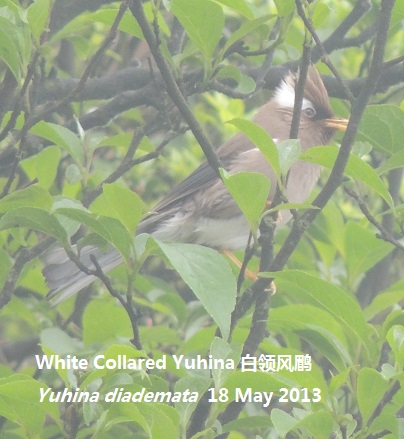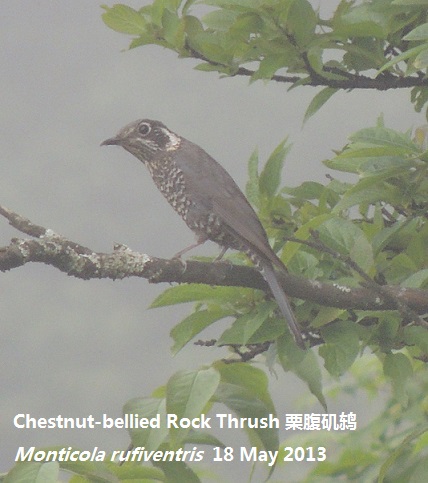Introduction
 Lei Gong Shan appears to have never been birded by foreign birdwatchers. This is a shame as it is easily accessible in the midst of picturesque Miao minority villages.
Lei Gong Shan appears to have never been birded by foreign birdwatchers. This is a shame as it is easily accessible in the midst of picturesque Miao minority villages.
Key Species
Chinese Barbet, Yellow-browed Tit, Golden Parrotbill, White-collared Yuhina, Red-tailed Minla, White-tailed Robin, Chestnut-bellied Rock Thrush, Kloss's Warbler.
Other Species
 Lesser Cuckoo, Great Barbet, Eurasian Jay, Verditer Flycatcher, Green-backed Tit, Yellow-cheeked Tit, Yellow-bellied Tit, Mountain Tailorbird, Mountain Bulbul, Chestnut-crowned Warbler, Hwamei, Streak-breasted Scimitar Babbler, Streak-throated Fulvetta, Pekin Robin, Russet Sparrow.
Lesser Cuckoo, Great Barbet, Eurasian Jay, Verditer Flycatcher, Green-backed Tit, Yellow-cheeked Tit, Yellow-bellied Tit, Mountain Tailorbird, Mountain Bulbul, Chestnut-crowned Warbler, Hwamei, Streak-breasted Scimitar Babbler, Streak-throated Fulvetta, Pekin Robin, Russet Sparrow.
Other Wildlife
Birding
The highest areas near the summit (2000m+) are best for White-collared Yuhina and Golden Parrotbill. Chestnut-crowned Warbler is quite common throughout. White-tailed Robin and Red-tailed Minla were found at about 1900m. Yellow-browed Tit is found at lower elevations near the junction with the main road. Kloss's Warbler is common everywhere below about 2000m. https://www.youtube.com/watch?v=C4or930afHQ https://www.youtube.com/channel/UC5vvCqjHb1nwHaertfdJLRg https://www.youtube.com/watch?v=UnpZNwczBU4
Habitat and Vegetation
Getting there
General Information
EditRegion9